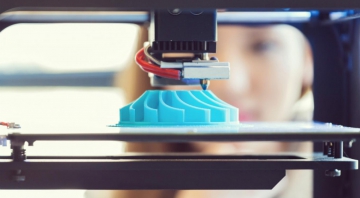Science fiction seems to be slowly merging with real life, especially when it comes to virtual reality (VR). We can now experience whole other worlds, and the technology is improving every day. Not only is VR used by techies and gamers to play immersive video games, but it is quickly moving into the workplace. EHS is starting to embrace VR by using immersive videos and graphics to improve safety, discover flaws, and conduct trainings. Here’s your one-stop shop to understanding the different features of the technology, possible benefits, and problems you should be aware of before jumping in.
Understand the Lingo
In order to purchase any type of reality-bending software and technology for your company, it’s key to understand the different terms: first, there’s VR. Virtual reality is the classic futuristic image: people in full helmets, goggles, and headphones. It’s a fully immersive experience, allowing users to explore, change, and discover another world.
Next, is Augmented Reality, or AR. It’s also referred to as “mixed reality.” For EHS purposes, augmented reality may be useful for everyday trainings and on the floor operations. Instead of immersing yourself inside a virtual system, augmented reality overlays graphics, schematics, and other information in front of the user, acting like an interactive hologram.
A Brief History of VR
For a while, mixed and virtual reality technology seemed like a passing consumer fad. However, Google has just re-launched Google Glass (minimalist virtual reality glasses), and instead of appealing to consumers, their new target is industry professionals. Specifically, industries that will uniquely benefit from hands-free technology. Plus, Google just released technology that will allow users to clip the mixed reality glasses over their workplace safety or prescription glasses.
Many big companies are embracing VR: not only is Oculus, the originator of the technology, still popular, but the Hololens from Microsoft and Google Cardboard are easily accessible technologies for the industry.
VR in the Workplace
The possibilities seem endless with mixed reality and virtual reality systems: product designers can use virtual 3D modeling systems to experiment with objects, resizing and morphing until they are happy with the result. Designers, engineers, and ergonomics professionals can use the technology to observe one model simultaneously. Similarly, this modeling system can be used to show clients or colleagues an immersive vision in design or manufacturing spaces, better than what 2D mapping can do.
Using augmented reality in the workplace can bring up manuals, instructions, definitions, and more for safety professionals. Just looking at a piece of machinery and using AR technology, the safety schematics could appear at your fingertips. For health and safety professionals, using VR could help point out design or safety issues, preventing accidents and saving money down the line. For workers that operate in dangerous fields, such as oil and gas or extreme heights construction, using VR first as a training simulation could help employees know how to handle dangerous situations before these occur.
When Antea Group was at the ILTA Conference this year, our team used HoloLens technology to show the possibilities of AR in engineering and consulting projects. Many videos exist online showing VR demos for safety training, construction, and oil and gas.
A Few Drawbacks to Consider
Of course, with any new technology, there will be challenges. Managers will need to consider classic ergonomics issues regarding the high amount of screen time VR and AR call for. Many have also discovered “simulator sickness” when getting used to VR technology. Some people have reported walking into walls, tripping, and hitting themselves or others. It may be necessary to install a VR-safe room at your facility, free of any furniture or other employees.
Are you ready for VR?
Virtual and augmented reality technologies are likely here to stay. Although the technology may seem a little reminiscent of science fiction, it may be time to take the red pill-and experience the other world of analytics, training, schematics, and databases VR can provide.
The field of EHS is constantly changing between new technologies, regulations, and best practices. Antea Group strives to stay on top of new findings, and deliver industry trends and updates back to you.
For more industry news, follow Antea Group on Twitter or LinkedIn.
Want more news and insights like this?
Sign up for our monthly e-newsletter, The New Leaf. Our goal is to keep you updated, educated and even a bit entertained as it relates to all things EHS and sustainability.
Get e-Newsletter


